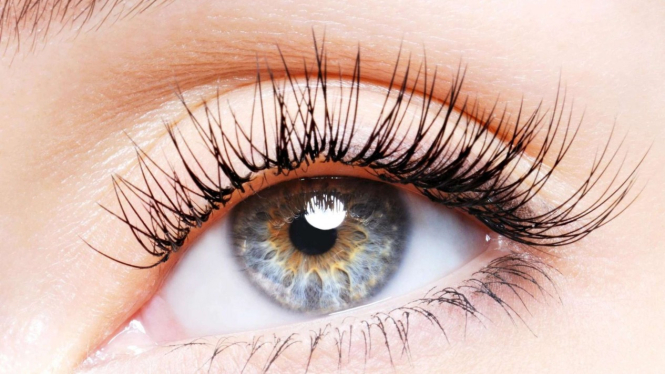High Cholesterol Signs Could Be Seen in Your Eyes
- freepik/valuavitaly
VIVA – Although rare, high cholesterol signs can appear on several parts of the face that are quite distinctive and easy to recognize. One is lumps with discoloration in the upper and lower eyelids that are often ignored by many people.
Many experts say that signs of high cholesterol in the body are difficult to recognize with the naked eye. However, some cases with high cholesterol or high triglycerides, also called hyperlipidemia, may show symptoms on the face.
For example, some people with hyperlipidemia may experience painless, soft to hard yellowish patches or bumps on the eyelids called xanthelasma. Researchers associate high cholesterol levels with other dermatologic inflammatory conditions, including lichen planus and psoriasis.
In addition, high cholesterol may present as a gray ring in the eye called a corneal arcus. This is especially true for those with a family history of high cholesterol. Research from 2022 shows that high blood cholesterol levels can increase a person's risk of stroke, heart disease, acute pancreatitis, and peripheral vascular disease.
Ilustrasi kolesterol tinggi
- U-Report
Well, here are some common signs of cholesterol in your eyes.
1. Xanthelasma
People with high cholesterol often have a common eye symptom which is known as xanthelasma — a raised or flat yellowish area that forms around the eyes or close to the nose.
Cholesterol build-up under the skin results in deposits. However, this condition doesn't affect vision. Nearly, 50 percent of people with xanthelasma tend to have high cholesterol. The condition commonly occurs in people who are smokers, overweight, and have high blood pressure, and diabetes.
2. Corneal arcus
According to the National Heart, Lung, and Blood Institute (NHLBI), a corneal arcus can signal very high cholesterol. A corneal arcus is a grayish-white ring around the cornea of the eye. The cornea is the transparent part that covers the iris and pupil. It mostly develops in people who have a family history of high cholesterol.
3. Lichen planus
Lichen planus (LP) is a common condition that causes an itchy rash on the skin or inside the mouth. Researchers have linked lichen planus to dyslipidemia or high lipid levels, which can include high cholesterol.
A 2020 study found that out of 148 people, those with LP had higher serum levels of triglycerides, total cholesterol, and low-density lipoprotein (LDL) cholesterol.
The most common symptoms are shiny purple or red bumps that may itch. They can appear anywhere on the body, including the face, but are most likely to appear on the wrists, arms, back, and ankles.
4. Psoriasis
Psoriasis is an immune-mediated condition that causes thick, scaly patches on the skin. They usually occur on the scalp, knees, elbows, and lower back, but can also occur on the face.
On lighter skin, the patches may appear pink or red. On darker skin, psoriasis patches may be darker or purplish. People with psoriasis typically experience symptoms that alternate between flares, where they are intense, and remissions, when symptoms decrease. According to a 2016 study, high cholesterol levels can activate the IL-17A gene and cause keratinocyte buildup.
Test cholesterol levels
The American Heart Association (AHA) recommends that adults aged 20 years and older get a traditional cholesterol and risk factor test every 4-6 years. After the age of 40, a health professional may want to assess their risk factors for high cholesterol. They can then recommend more frequent testing.
The AHA also suggests that people at high risk of high cholesterol, such as those with cardiovascular disease or a family history of high cholesterol, may require frequent testing. Testing cholesterol levels can also help medical professionals calculate a person's lifetime cardiovascular risk.



























